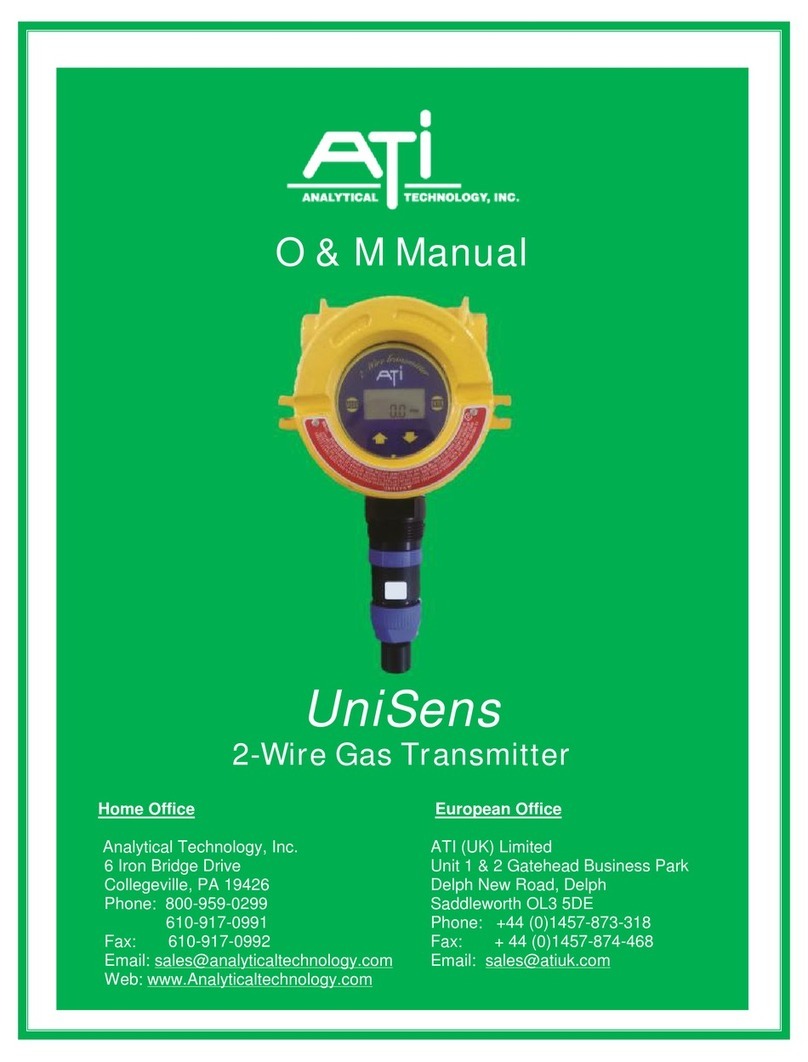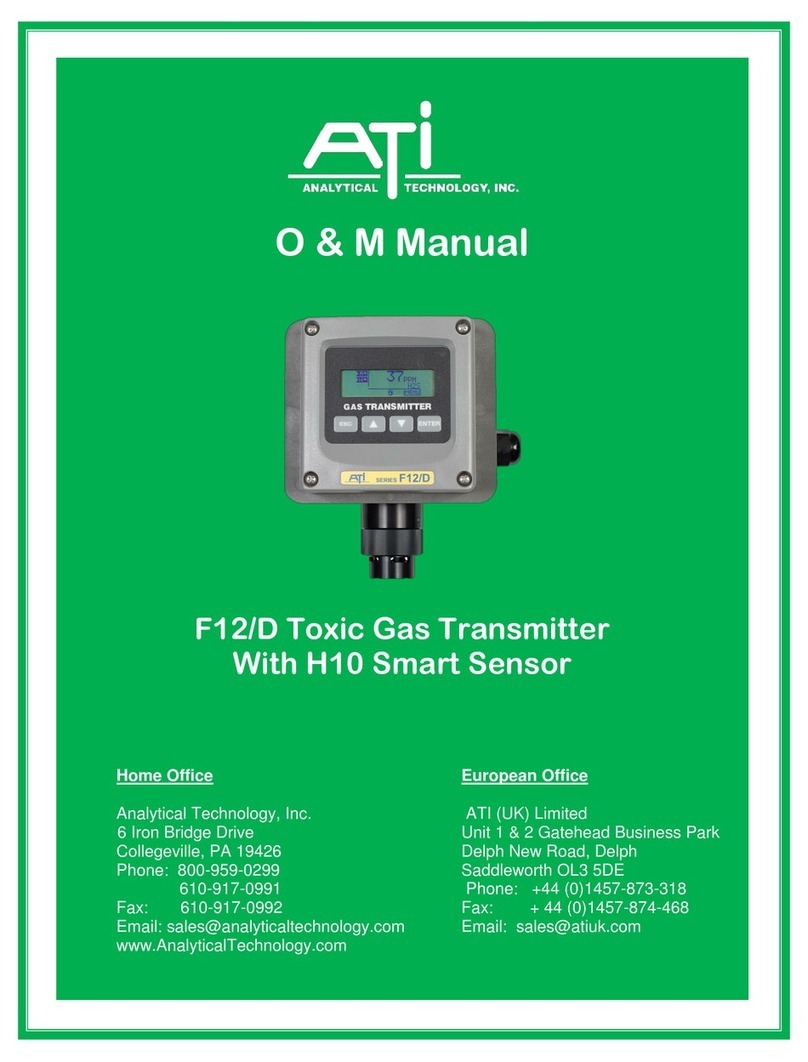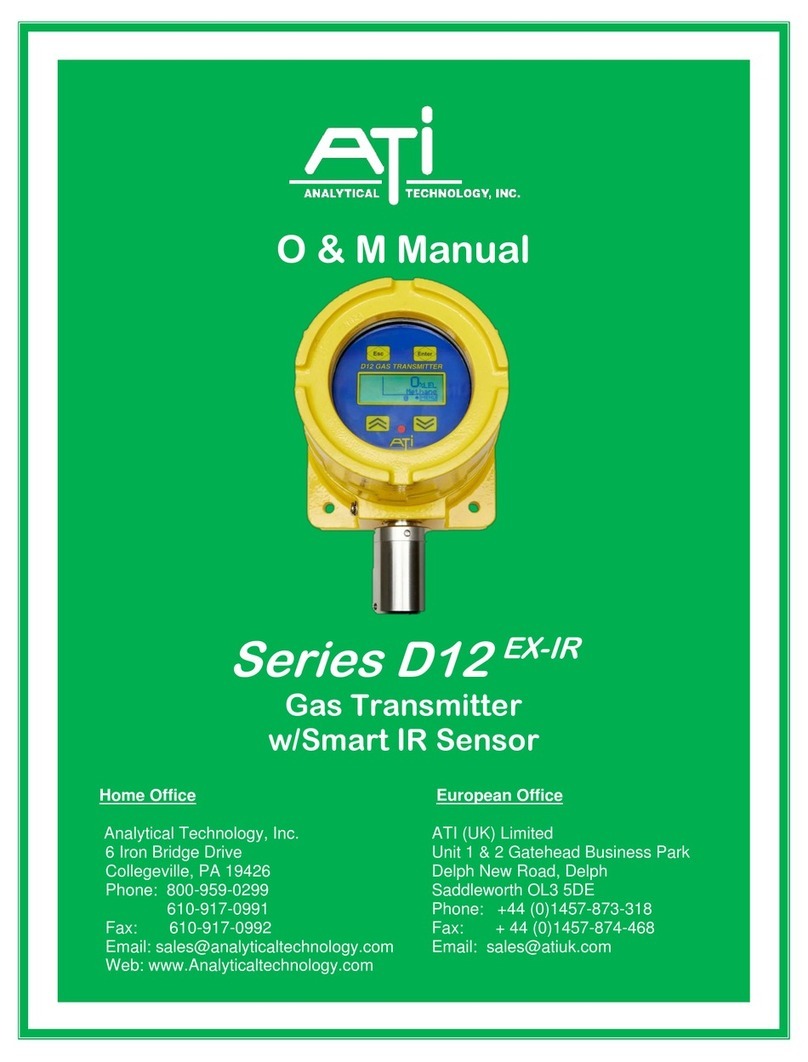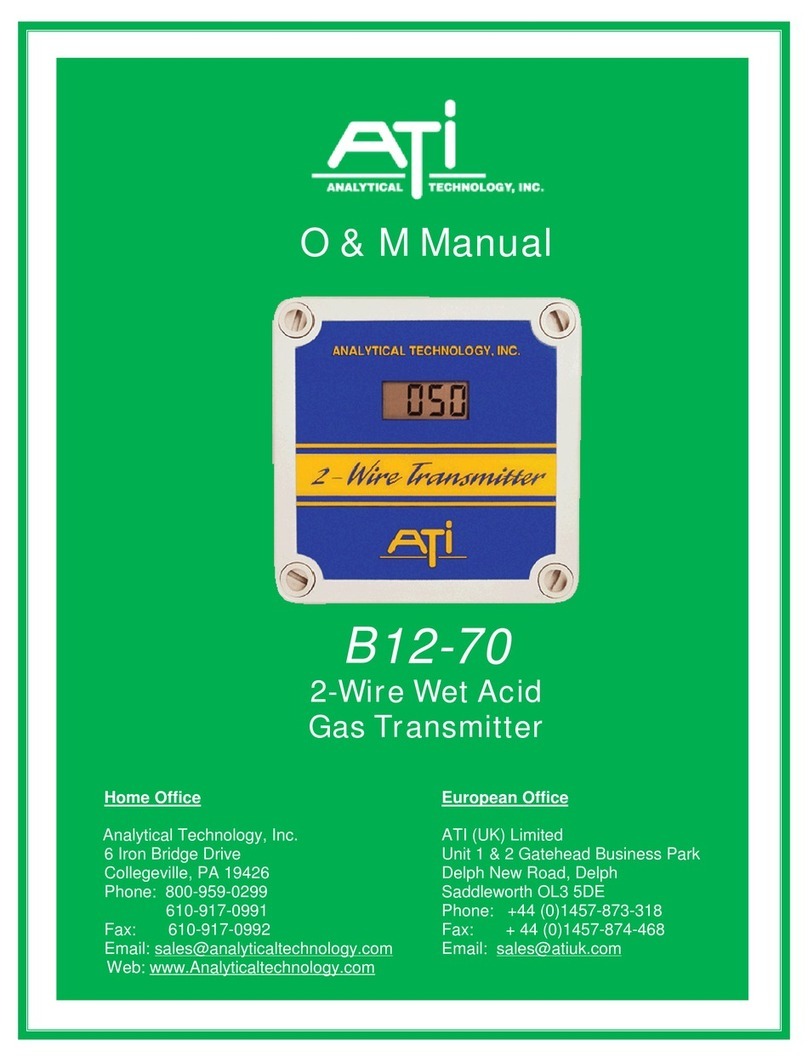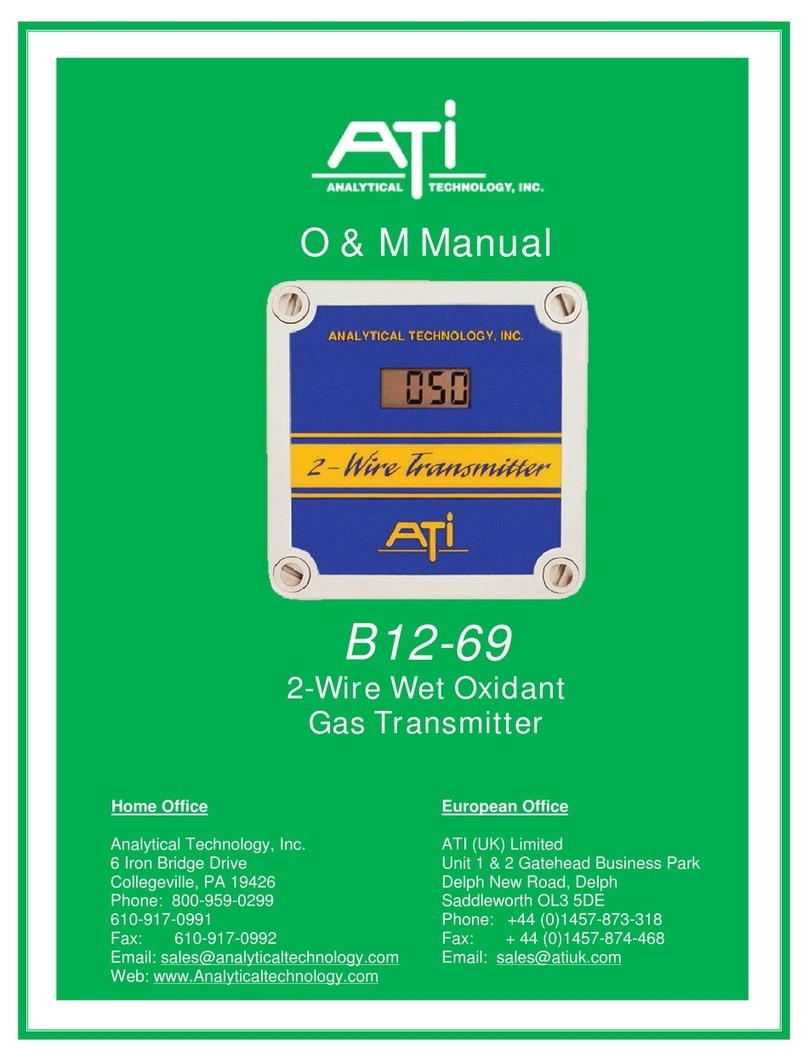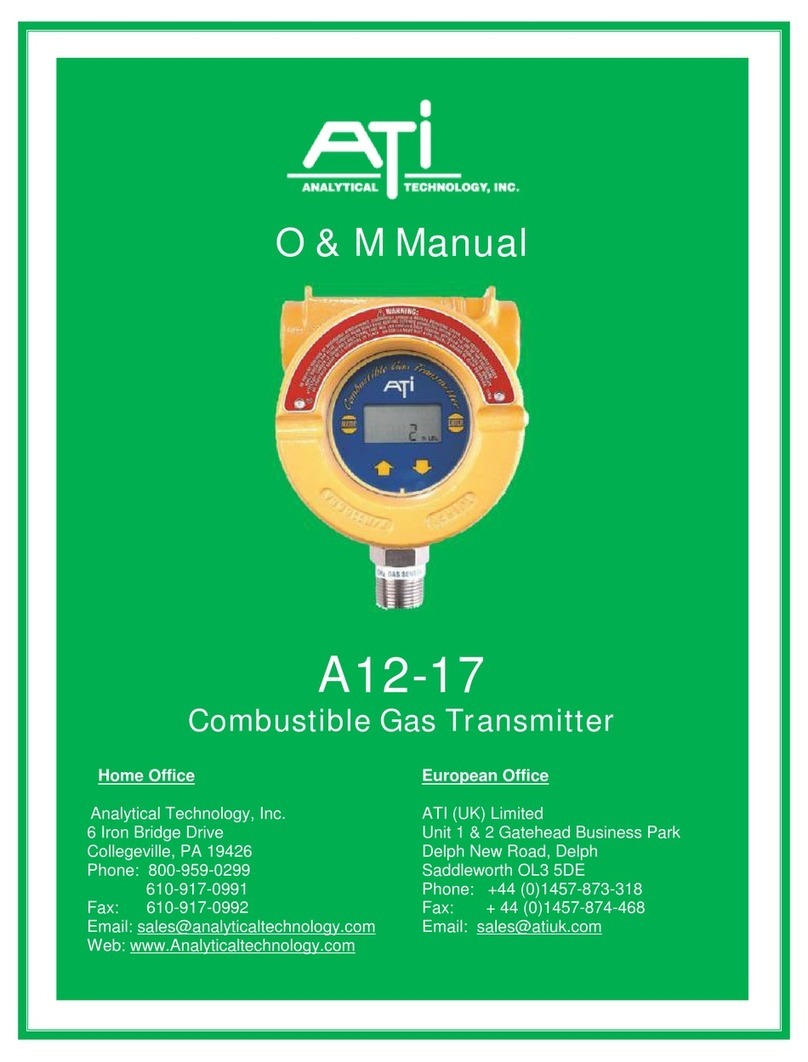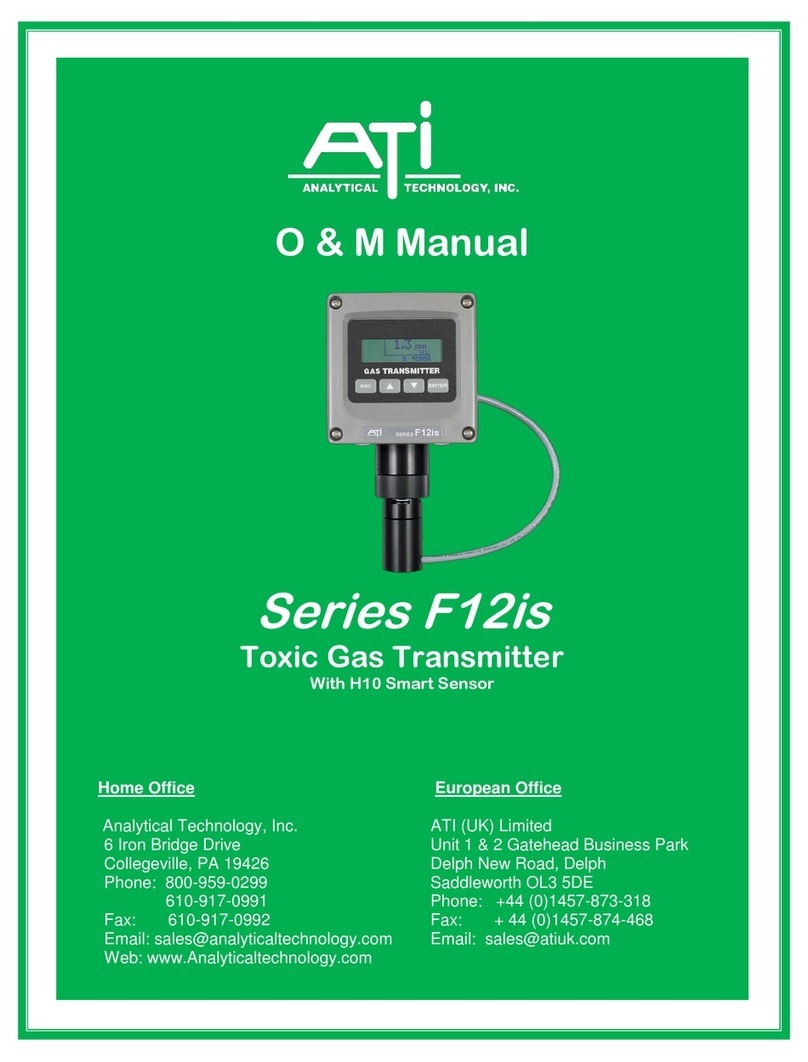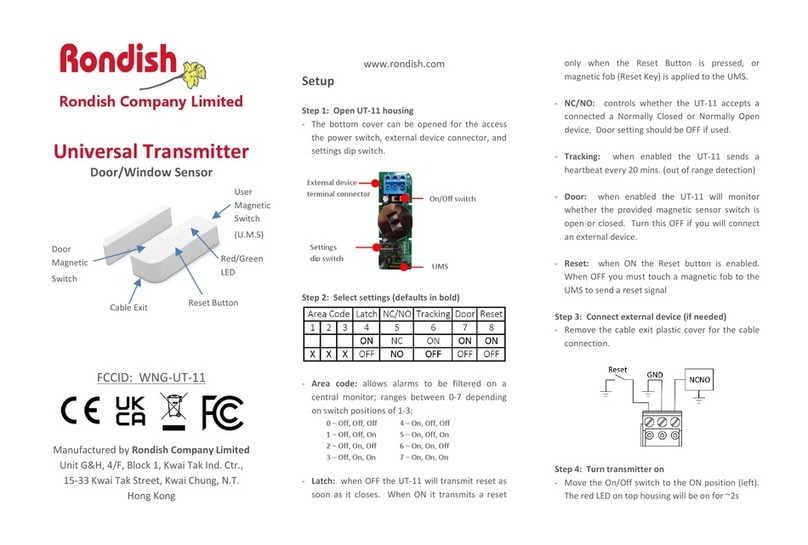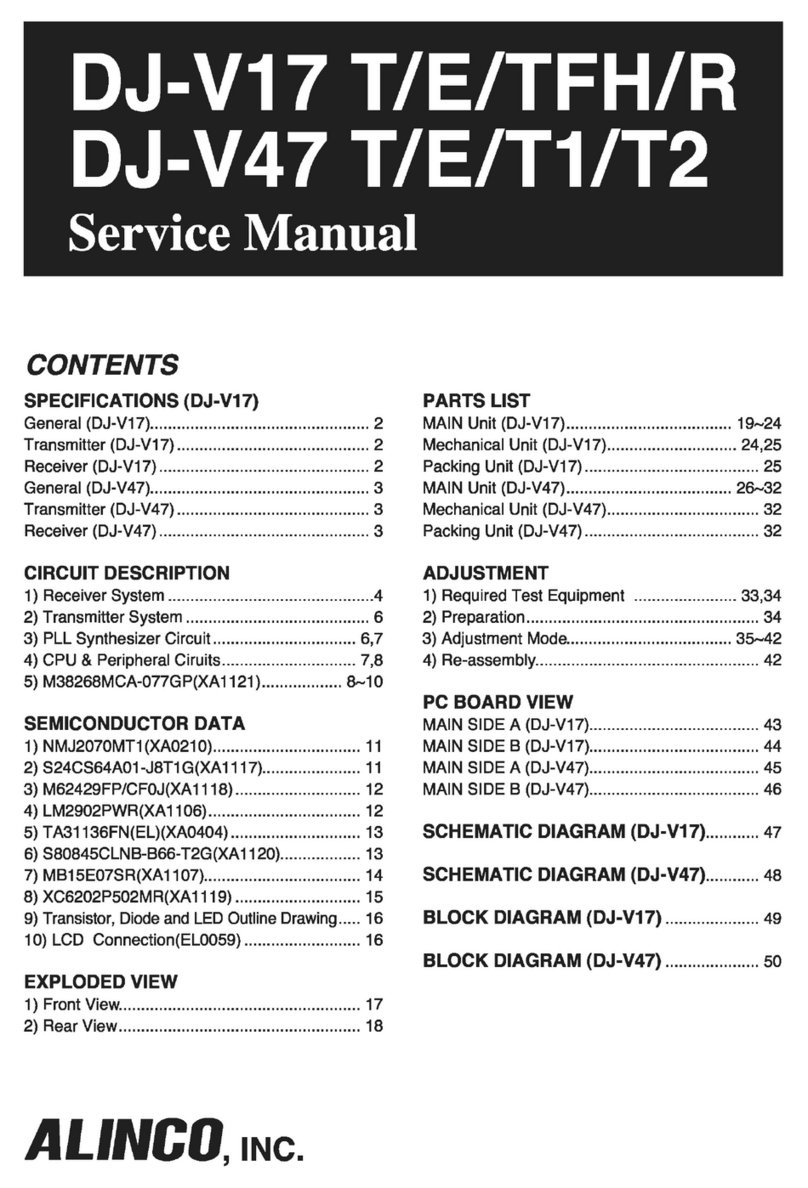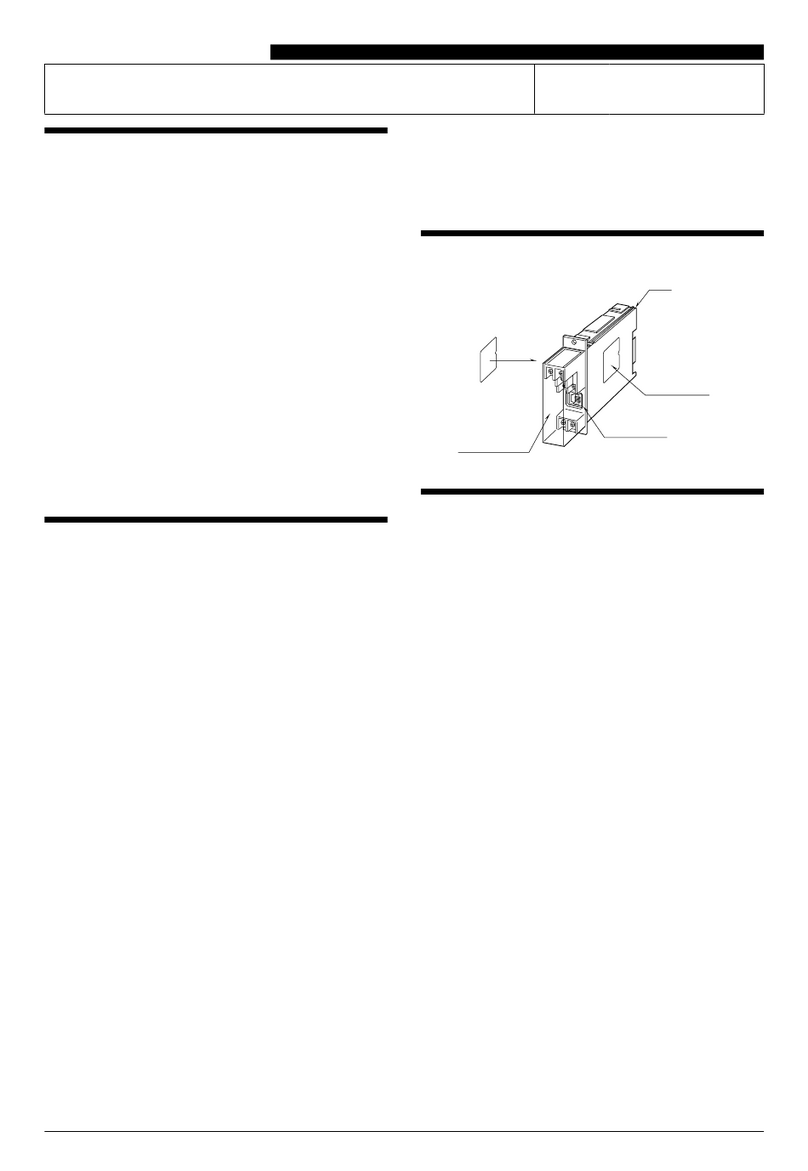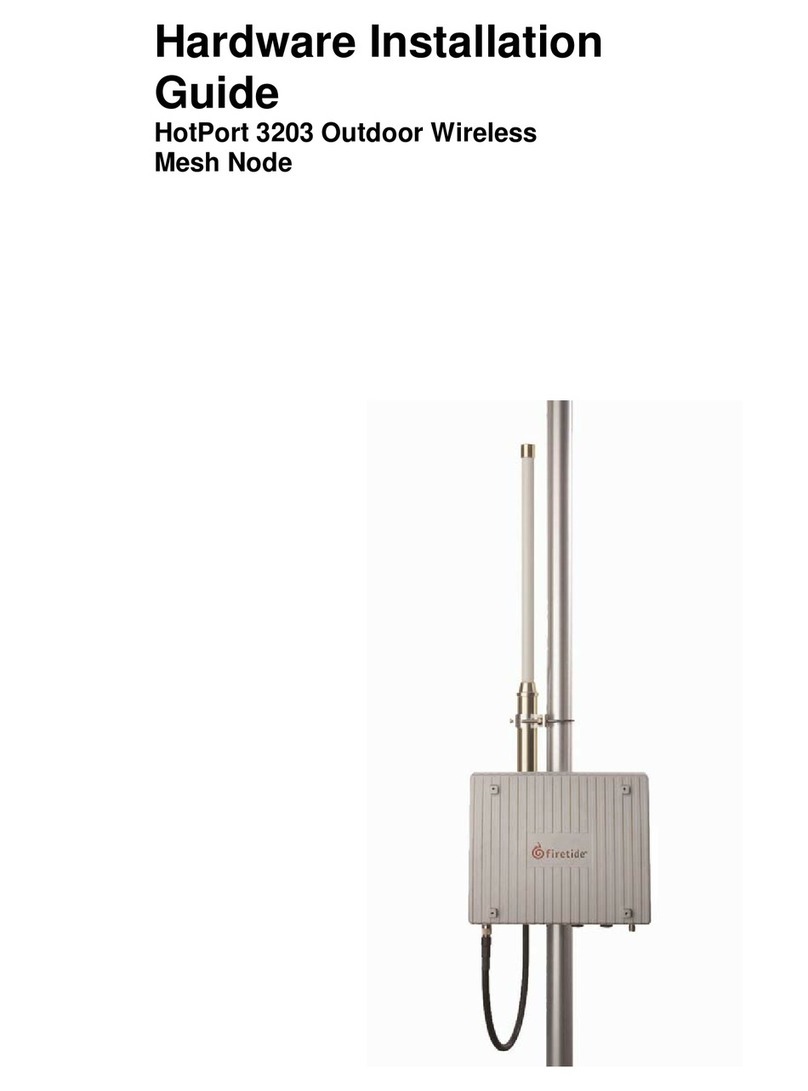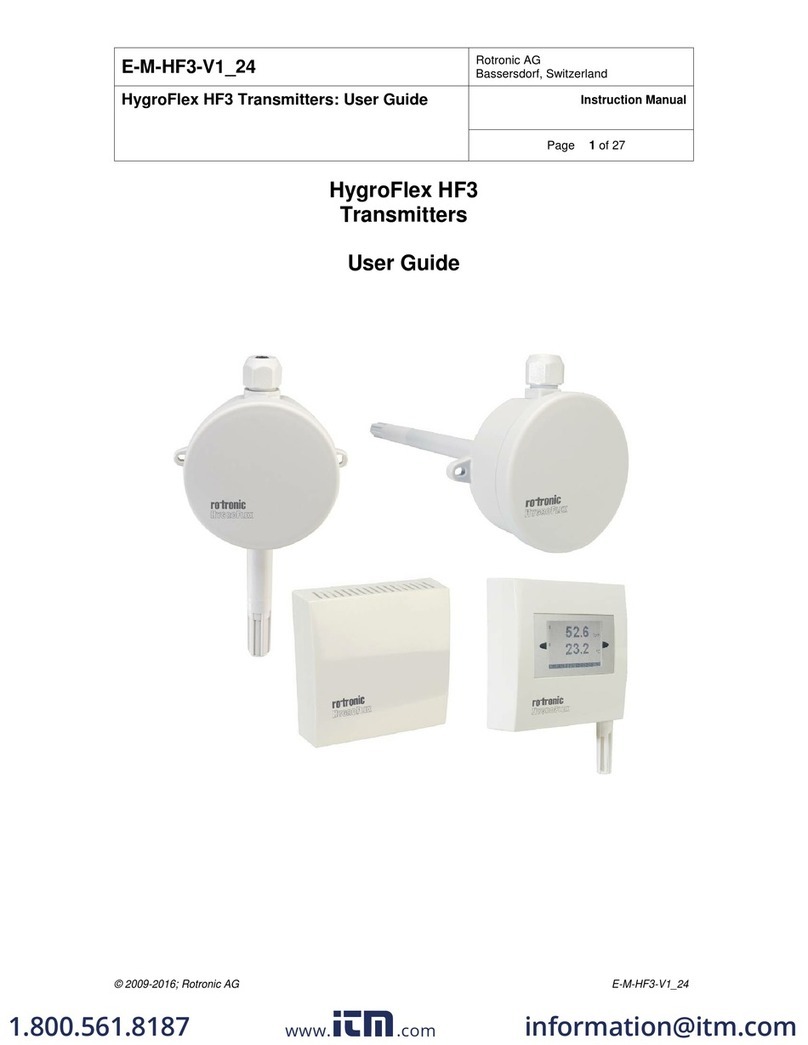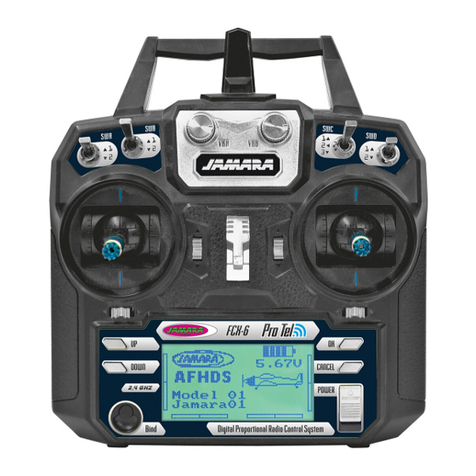
Series D12 LEL Gas Transmitter with Catalytic Bead Sensor
Revision J (July 15)
Data-log Printout ...............................................................57
DISPLAY....................................................................58
Display Setup Page...........................................................58
SYSTEM.....................................................................59
System Access Page ........................................................59
Real-time Clock................................................................59
Clock Setup Page..............................................................59
Security............................................................................60
Security Control Page .......................................................60
Activating Security.............................................................60
Deactivating Security.........................................................61
Changing the Password ....................................................61
Communications..............................................................62
Communication Setup Page..............................................62
ASCII ................................................................................63
HART................................................................................63
Modbus.............................................................................65
Transmitter Version..........................................................65
Restart .............................................................................66
Resets..............................................................................66
SPARE PARTS ________________________ 67
APPENDIX A. _________________________ 68
PRINTING DATA LOG REPORTS .....................................68
Serial Connection.............................................................68
Communication Setup Page............................................68
Flow Control.....................................................................68
Report Format..................................................................69
Report Control .................................................................69
EXAMPLE:CHARTING A DATA LOG REPORT ..................70
Starting the Report...........................................................73
Charting with Microsoft Excel...........................................76
List of Figures
Figure 1. D12 transmitter....................................................................5
Figure 2. Combustible gas sensor ......................................................5
Figure 3. Combustible sensor with gas generator...............................5
Figure 4. Wheatstone bridge circuit ....................................................6
Figure 5. Overall Dimensions-Non Autotest Version (ATI-0587) .......10
Figure 6. Overall Dimensions- Autotest Version (ATI-0588)...............10
Figure 7. Separating the board stack................................................11
Figure 8. Power supply board connections .......................................12
Figure 9 Relay Contacts...................................................................13
Figure 10. ATI A17/B14 Example .....................................................14
Figure 11. Power Without 4-20mA Signaling Example......................15
Figure 12. 4-20mA Signaling, Single Supply, 3-Wire Example..........16
Figure 13. 4-20mA Signaling, Dual Supply, 4-Wire Example.............17
Figure 14. HART Transmitter, Point-to-Point, 3-Wire Example..........18
Figure 15. HART Transmitter, Multi-drop, 3-Wire Example...............19
Figure 16. RS485 Modbus Multidrop Example..................................20
Figure 17. RS232 Modbus, PC Capture, Printer Example.................21
Figure 18. Remote Sensor Wiring (ATI-0592)...................................22
Figure 19. CPU Board configuration.................................................23
Figure 20. Operator interface panel..................................................24
Figure 21. Startup review sequence .................................................25
Figure 22. Main display ....................................................................26
Figure 23. Standard fault indication ..................................................26
Figure 24. Variable editing ...............................................................28
Figure 25. Sensor setup page...........................................................29
Figure 26. Data-log warning page.....................................................29
Figure 27. Sensor “more” page.........................................................30
Figure 28. Zero calibration................................................................33
Figure 29. Zero_Sensor page...........................................................33
Figure 30 Span calibration................................................................34
Figure 31. Span_Sensor page..........................................................34
Figure 32. Sensor calibration history page........................................36
Figure 33. Combustible sensor with auto-test option.........................37
Figure 34. Auto-test control page......................................................38
Figure 35. Auto-test setup page........................................................38
Figure 36. Auto-test sequence......................................................... 41
Figure 37. Default alarm relationships for combustible gas sensors. 42
Figure 38. Manual alarm reset ......................................................... 42
Figure 39. Alarm setup pages (example).......................................... 43
Figure 40. Rising alarm (Active=ABOVE_SP, Reset=AUTO) ........... 46
Figure 41. Falling alarm (Active=BELOW_SP, Reset=AUTO).......... 46
Figure 42. Fault alarm (Main Display) ..............................................47
Figure 43. Fault page....................................................................... 47
Figure 44 Alarm relay schematic....................................................... 50
Figure 45. Relay setup page (example)............................................ 51
Figure 46. Relay test page example................................................. 51
Figure 47. Inhibiting alarms from the Main Display........................... 52
Figure 48. Alarm inhibit setup page.................................................. 52
Figure 49. Current loop output plot...................................................53
Figure 50. 4-20mA setup page......................................................... 53
Figure 51. 4-20mA control page.......................................................54
Figure 52. Loop adjustment pages...................................................54
Figure 53. Data log access page...................................................... 55
Figure 54. Data log setup page........................................................ 55
Figure 55. Data log graphic report page...........................................56
Figure 56. Data log tabular report page............................................56
Figure 57. Data-log printout..............................................................57
Figure 58. System access page....................................................... 59
Figure 59. Clock setup page............................................................59
Figure 60. Security control page ......................................................60
Figure 61. Activating security........................................................... 60
Figure 62. Deactivating security....................................................... 61
Figure 63. Changing the password................................................... 61
Figure 64. Communication setup page.............................................62
Figure 65. Hart setup pages............................................................. 63
Figure 66. Hart a) Find-me and b) Device found pages.................... 64
Figure 67. Modbus setup page......................................................... 65
Figure 68. Transmitter version page................................................. 65
